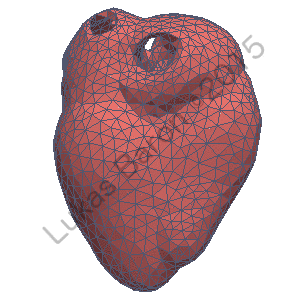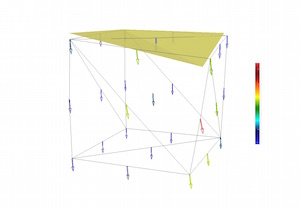Modeling, Simulation and Optimization of the Contraction of the Human Heart
- Ansprechperson:
- Projektgruppe:
Herzmodellierung, Elastomechanik
Topics of interest:
- mechanical simulation using finite element method
- anisotropic material laws for heart tissue
- fiber models for ventricles and atria
- numerical optimization
- inverse solutions
- fluid-structure coupling
Description:
The main objective of this research project covers the mechanical simulation of contraction of the heart (ventricles, atria, pericardium and surrounding tissue).
Electrophysiological  activation over the atria and ventricles is computed using an internal software tool developed at the Institute of Biomedical Engineering (IBT), resulting in a time-dependent force development in each myocyte fiber.
activation over the atria and ventricles is computed using an internal software tool developed at the Institute of Biomedical Engineering (IBT), resulting in a time-dependent force development in each myocyte fiber.
This time and space dependent force is taken as input for a virtual heart model and represents the active part of internal forces. Its counterpart, the passive forces come from torsion and deformation (strain) and anisotropic stiffnesses due to filamentary microstructure (‘material laws’). Both forces need to be in balance and yield after discretization with quadratic finite elements and an explicit time stepping scheme a realistic contraction of the model.
The detailed  representation of the model allows the simulation of local changes of parameters e.g. infarctions and a locally stiffer material. Benefits are a better academic understanding of the behavior and influence of different heart deseases, as well as prediction for certain disease cases and therapy benefits. Clinical applications profit by an improved interpretation of 4D imaging data obtained from CT, MRI or ultrasonics.
representation of the model allows the simulation of local changes of parameters e.g. infarctions and a locally stiffer material. Benefits are a better academic understanding of the behavior and influence of different heart deseases, as well as prediction for certain disease cases and therapy benefits. Clinical applications profit by an improved interpretation of 4D imaging data obtained from CT, MRI or ultrasonics.
Other fields of interest are virtual tissue tests, mechano-electrical feedback, inverse determination of material properties and the full coupling with a fluid dynamic simulation.

